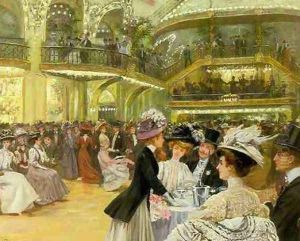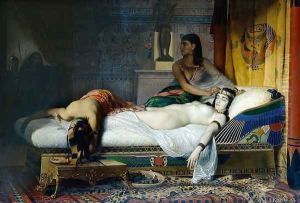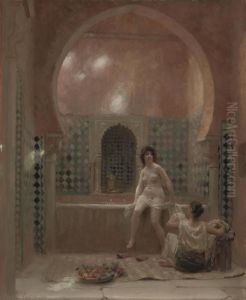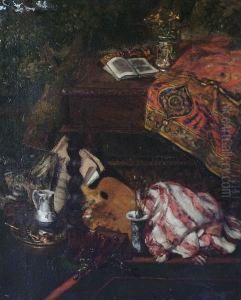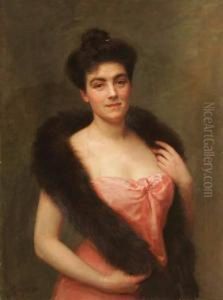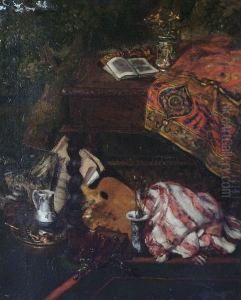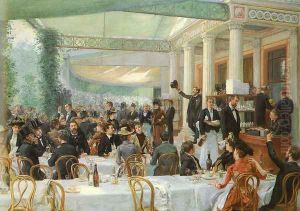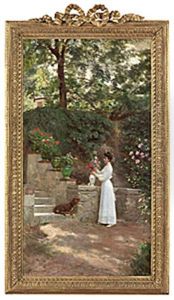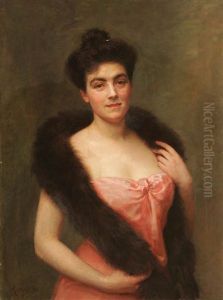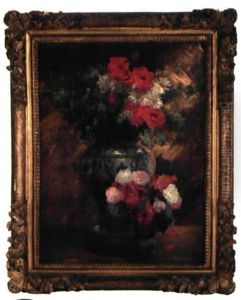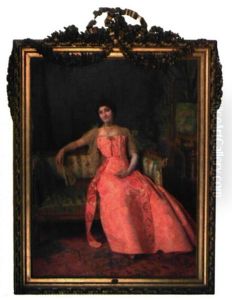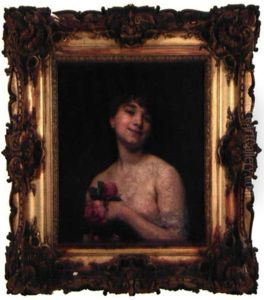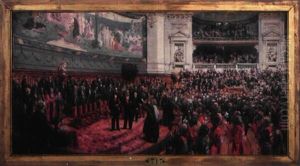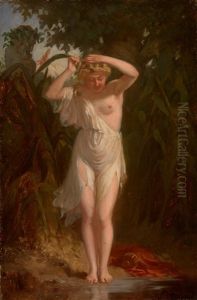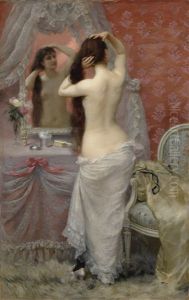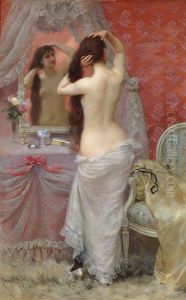Jean Andre Rixens Paintings
Jean André Rixens was a French painter born on January 29, 1846, in Saint-Gaudens, Haute-Garonne. He was a notable figure in the academic art world of the late 19th and early 20th centuries. Rixens received his artistic training at the École des Beaux-Arts in Paris, where he studied under the tutelage of renowned academic painters such as Alexandre Cabanel, a leading exponent of the academic style that emphasized classical themes and techniques.
During his career, Rixens developed a reputation for his prowess in historical and mythological scenes, as well as for his portraiture. His painting style was characterized by its fine detail, rich color palette, and adherence to the academic standards of beauty and composition. Rixens exhibited his works at the Paris Salon, a prestigious annual and then biennial art event in Paris, where he gained recognition and accolades. He was a recipient of several medals at the Salon, reflecting the high esteem in which his work was held by his contemporaries.
Rixens' works often depicted scenes from history and literature, executed with a technique that showcased his skill in capturing the texture of fabrics and the subtleties of human expressions. One of his most famous paintings, 'La Mort de Cléopâtre' (The Death of Cleopatra), exemplifies his dramatic flair and his ability to portray historical figures with a sense of grandeur and tragedy.
Over the years, Rixens took on various prestigious commissions, including decorative works for public buildings. This not only demonstrated the trust in his abilities as an artist but also ensured that his work reached a wider audience. His paintings can be found in various museums and collections today, offering insight into the academic art traditions of his time.
Jean André Rixens passed away on February 18, 1924, in Paris. Throughout his life, he contributed significantly to French art and remained committed to the academic style even as the art world around him began to embrace modernism. Despite the shift in artistic trends, Rixens' work has continued to be appreciated for its craftsmanship and historical value.
